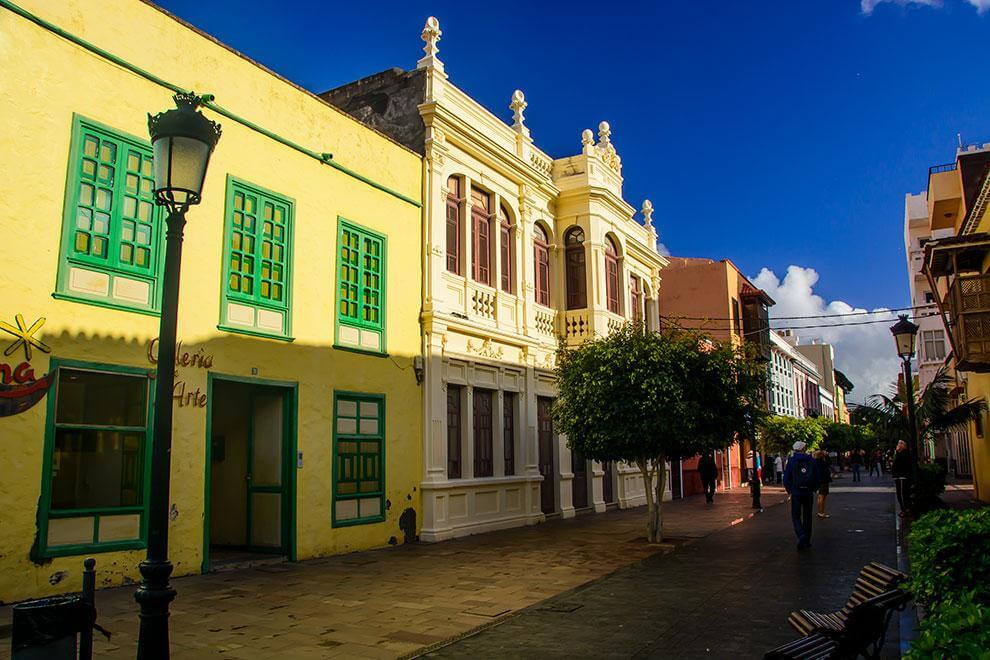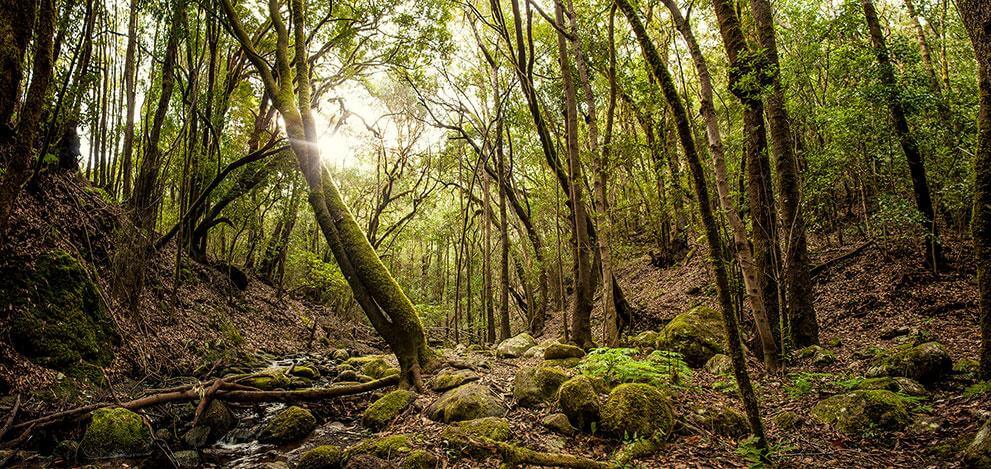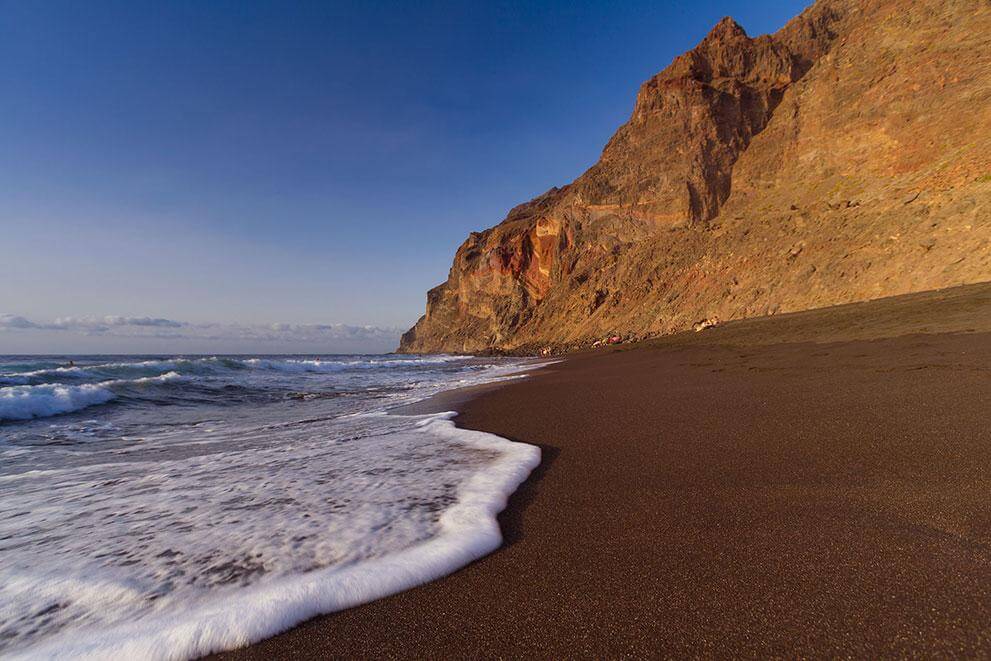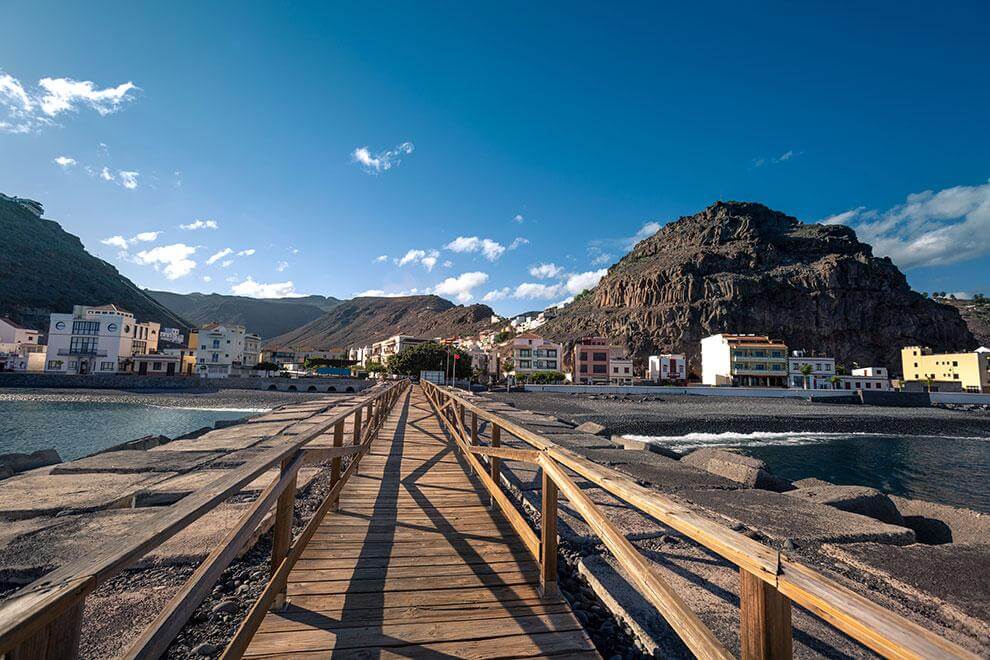What are the must see places in La Gomera? Here we tell you about the best sights to see when your cruise makes a long or short stopover
The cruise ship anchors at La Gomera, a well preserved natural beauty spot that breathes tranquillity. The island has a great landscape with volcanoes and dramatic ravines that are millions of years old. At only 370 square kilometres in size, La Gomera is the third smallest island in the Canary archipelago. Below we will discover some of the must see places in this little island. It doesn’t matter if you have a few hours or a few days in La Gomera, your trip will be amazing. Our tour begins in the capital San Sebastián de La Gomera.
Short trips to La Gomera:
San Sebastián de La Gomera
San Sebastián de La Gomera is where cruise ships dock. The economic centre of La Gomera is world famous for having sheltered Christopher Columbus during his last stop on dry land before he arrived to America back in 1492. This is a picturesque town with Instagram-ready historic and contemporary architecture. There are colourful house fronts, wooden balconies, and palm trees. The visitor hotspots in San Sebastián de La Gomera are located around Calle Real. In this area there is the Casa Bencomo (a nineteenth century house designed with classical architecture), Pozo de la Aguada (a historic fountain), the Archaeological Museum, the Church of Our Lady of the Assumption, and the Hermitage of San Sebastián.






El Roque de Agando
This is perhaps the most famous view spot on La Gomera. El Roque is a majestic rock formation which has been sculpted by thousands of years of erosion. El Roque together with four other large rocks – Ojila, Carmona, Las Lajas and Zarcita – makes up a chain of stones known as the Natural Monument of Los Roques.



El mirador de la Lomada del Camello
This place has a wonderful panoramic view of San Sebastián. On clear days (which is almost every day in the Canary Islands) there are spectacular views of Mount Teide on the neighbouring island of Tenerife.
Mirador de Abrante
This window lookout is suspended in the air and juts out from the side of a cliff. It draws instagrammers from all over the world due to the spectacular 360º views of Agulo and Tenerife.



Juego de Bolas Visitor Center
Located in the north of the island, in La Palmita, within the municipality of Agulo, at the Juego de Bolas visitor center you will find everything you need to plan your stay in La Gomera: official information, brochures, hiking trails, plus some beautiful gardens, a good sample of local vegetation, an ethnographic museum, various craft workshops and a large model of the island, adorned with all kinds of information about the flora, fauna, geography and culture of La Gomera.
La Laguna Grande
This large recreational area of 800 square meters is located toward the center of the island, surrounded by a beautiful laurel forest and is the ideal place to take a break and enjoy a moment of rest and disconnection. It has a visitor center that will provide us with all the necessary information about the secrets of the island and so as to design our stay in it.
Parque Nacional de Garajonay
This natural space, the jewel in the crown of La Gomera, is an ideal location for people who love nature, hiking, and photography. It is a magical laurel forest, often shrouded in mist, with trees coloured in an infinite number of shades of green. It is important because most of the laurel forests disappeared from the planet many years ago. This national park is one of the last left. When we walk through the forest we find numerous springs and incredible types of flora and fauna. The Garajonay National Park is part of the UNESCO World Heritage programme such is its natural charm and importance.






Longer trips to La Gomera:
Los Órganos
Located in the north of La Gomera, Los Órganos looks like it has been made with CGI. This geological formation which has an appearance similar to organ pipes is only visible from the sea. The peculiar effect that cooling and erosion has made on the huge columns of basalt give the rock the unique appearance of seeming to drop vertically into the ocean. The beauty of the surroundings has led the area to be designated as a natural monument.






Hermigua
This valley will leave trekkers with fond memories. There are walking routes with fabulous views. One particular path leads down a gorge into Santa Catalina beach where the green of the banana plantations contrast with the blue colour of the ocean. In the area of “El Peñón” there is also the ruins of an historic “cavit”, or crane, which in the nineteenth century was used to load ships full of produce from the Canary Islands.



Valle Gran Rey
The chiselled contours of the “Big King Valley” is sure to smooth the mood of visitors. At the mouth of the hills there are fine black sandy beaches (Playa del Inglés is the most famous), beautiful palm groves, picturesque agricultural terraces, and houses built with the traditional architectural techniques of the Canary Islands.









Playa de Santiago
This charming enclave beach has black volcanic sand. It is one of the most admired on La Gomera. It is so great in fact that movie director Ron Howard chose it, out of the countless other options, as a key location for his film “In the Heart of the Sea”.



Vallehermoso
This valley region is the largest municipality on the island of La Gomera. It has a range of landscapes from the green peaks of the Garajonay National Park to coastal terrain. In the historic town centre, there are examples of traditional architecture. For lovers of contemporary architecture, there is also the La Encantadora dam which is a dramatic example of the strength of modern construction techniques. Besides its imposing structure, the dam offers exciting views of the Roque Cano, an enormous rock formation in the north of La Gomera. Other noteworthy places in Vallehermoso include Arguamul and Alojera. These locations, which operate as the main palm honey producers on the island, have wonderful black sand and pebble beaches. The industriousness of the local people is proven in the agricultural terraces, stables, wineries, mills, wells, and kilns dotted around the small villages.



